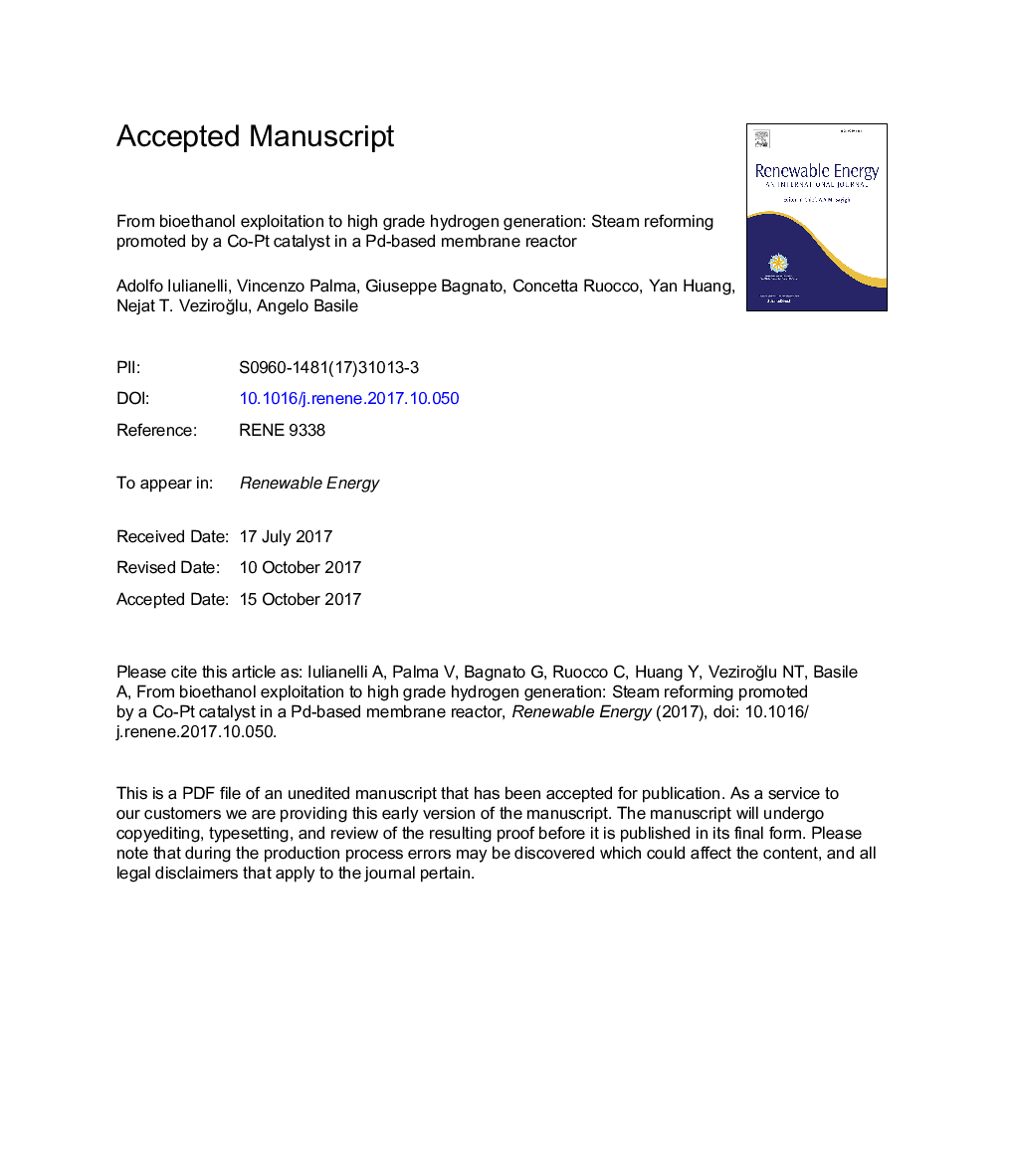| Article ID | Journal | Published Year | Pages | File Type |
|---|---|---|---|---|
| 6765042 | Renewable Energy | 2018 | 33 Pages |
Abstract
There is a general agreement about the consideration that the fossil fuels are a limited resource and the emission of carbon dioxide and other harmful products are the main cause of the global warming and climate change. The interest for decreasing the fossil fuels dependence and reducing the greenhouse gases emissions represents a top priority. The biomass is a renewable resource useful for biodiesel and bioethanol production. The latter, most plentiful, is currently considered as green ethanol produced from biomass by biological processes. Meanwhile, membrane reactors represent an innovative and intensified technology for the production and the simultaneous recovery of high-grade hydrogen in only one stage. Here, we describe an efficient medium-temperature (T = 400 °C) bioethanol steam reforming process in a thin (â¼5 μm of metallic layer) supported Pd-based membrane reactor packed with a not commercial Co(10%)Pt (3%)/CeO2-ZrO2-Al2O3 bi-metallic catalyst at space velocity between 1900 hâ1 and 4800 hâ1 and reaction pressure between 1.5 and 2.0 bar. A real bioethanol mixture coming from industry is supplied to the membrane reactor for producing high grade hydrogen, reaching 60% of ethanol conversion (versus â¼Â 40% of the equivalent conventional reactor) at 400 °C, 2.0 bar and 1900 hâ1, meanwhile recovering almost 70% of the hydrogen produced during the bioethanol steam reforming reaction with a purity higher than 99%. This would make the delivery of hydrogen for PEM fuel cells supplying - and hence the use of green bioethanol as a practical hydrogen carrier - feasible.
Keywords
Related Topics
Physical Sciences and Engineering
Energy
Renewable Energy, Sustainability and the Environment
Authors
Adolfo Iulianelli, Vincenzo Palma, Giuseppe Bagnato, Concetta Ruocco, Yan Huang, Nejat T. VeziroÄlu, Angelo Basile,
